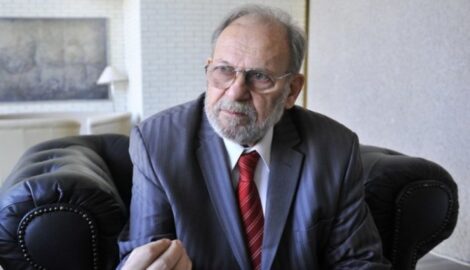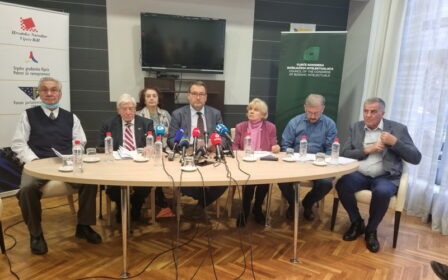Bosnia 71 out of 162 in 2013 Global Peace Index

LONDON, June 11, 2013 – Bosnia and Herzegovina ranks 71st out of 162 in this year’s Global Peace Index (GPI) released today. Despite an increase in weapons exports and political instability, the country’s level of peace increased slightly after a reduction in its political terror scale.
Dramatic rise in the number of homicides drives reduction in world peace over the last year
· Measures of state-sponsored terror and the likelihood of violent demonstrations are the most improved indicators
· 5% deterioration in the Global Peace Index recorded over the last six years
· Syria’s peace score records the largest fall in GPI history; Libya’s peace bounces back after the civil war but still low
· Iceland maintains status as the most peaceful country whilst war-ravaged Afghanistan returns to the bottom of the index
· Europe remains the most peaceful region comprising thirteen of the top twenty peaceful countries; South Asia is the least peaceful region
· Eastern and Western Europe homicides are dropping, contrary to global trend
· In the past year the Drug War in Mexico has claimed twice as many lives than the conflicts in Iraq and Afghanistan
Globally, a dramatic rise in the number of homicides and more countries, 59, increasing their military expenditure as a percentage of GDP were the key drivers in making the world a less peaceful place, according to the 2013 GPI. This year’s findings underline a 6-year trend showing a deterioration of 5% in global peace. In this time 110 countries have seen their score deteriorate while only 48 became more peaceful. The economic impact of this 5% loss in peace came at a cost to the global economy of US$473 billion last year, or the equivalent to almost four times Official Development Assistance (ODAs) in 2012.
The sharp increase in the number of homicides[1] – up 8% over the last year – can be almost entirely attributed to Latin America and Sub-Saharan Africa with, for example, the homicide rate in Honduras further increasing by almost 10 per 100,000 people – becoming the highest in the world at 92 homicides per 100,000 people.
Steve Killelea, founder and Executive Chairman of the IEP, said: “The migration of populations to urban areas in developing countries has been a key driver in the rise of homicides worldwide. This has also led to an increase in violent crime. It is essential for the police to gain the trust of those living in city slums, to achieve this, addressing police corruption would be a first important step”.
The overall deterioration of the military spending indicator in the GPI is primarily due to a large number of low-middle income countries, typically authoritarian regimes like Iran, Iraq, Oman, Zimbabwe and Afghanistan, Cote d’Ivoire and DRC, having increased their expenditure to more than 7% of GDP.[2]
In contrast some slight improvements were evident over the last year on the indicators of the likelihood of violent demonstrations and the Political Terror Scale, a measure of state-sponsored terror, with improvements in countries such as Kenya, Kyrgyz Republic, Zambia, and Tunisia.
Commenting on this year’s results, Steve highlights: “The findings of this year’s Index support the prevailing trend of the last six years, namely: a continuing shift away from nations taking up arms against one another and towards more organised internal conflicts. A key factor associated with this is that the peace gap between countries under authoritarian regimes and the rest of the world is becoming larger”.
This is best exemplified by Syria’s descent into civil war, which recorded the greatest score deterioration in the history of the Index. Additionally many Middle Eastern and North African countries continue to be affected by the fallout from the Arab Spring with violent demonstrations and further political instability, notably Egypt, Bahrain and Tunisia.
The data also revealed evidence of countries being able to make significant gains in peace as their emergence from conflict gave way to the re-building of the Pillars of Peace which are the necessary components to create peaceful, resilient and socially sustainable societies[3]. Libya, for example, experienced the greatest rise in peace as its newly elected government and recovering institutions were established following the turmoil of the recent revolution and civil war. North Africa also had more to celebrate as Sudan and Chad experienced the second and third most substantial gains as their respective conflicts eased.
Steve Killelea continued: “The 6-year data trend shows that the onset of conflict can happen quickly – but that peace improves gradually and must be nurtured over the long term by strengthening the attitudes, institutions and structures which support peaceful societies – known as the Pillars of Peace. The outlook for Libya remains uncertain and we can see that Afghanistan has returned to the bottom of the GPI amid mounting political instability, a rise in terrorist activity and in the level of political terror.”
OTHER REGIONAL HIGHLIGHTS
Europe remains the most peaceful region comprising thirteen of the top twenty countries including Iceland which continues to rank first. However, several high debt countries including Spain, Greece, France and Portugal; experienced less peaceful conditions amid challenging economic circumstances during the last year. This also reflects the six-year trend data which shows that countries that suffer from recession decrease in peace at a greater rate than the rest of the world.
North America slightly improved in score compared with 2012. However, the US ranks 99th on the index and continues to score weakly compared with its OECD peers on the basis of its jailed population (the highest in the world); its involvement in numerous overseas conflicts; its homicide rate and its nuclear and heavy weapons capabilities, amongst others.
South American nations Uruguay and Chile stand out as the two most peaceful in the region, characterised by relatively strong institutions and the rule of law. Conditions deteriorated in third-ranked Argentina amid poorer relations with its neighbours and the deterioration in a number of internal indicators.
In Central America, Costa Rica again emerges as the most peaceful nation. Nicaragua, Guatemala and El Salvador all saw improvements in their GPI scores, albeit from low levels. This partly reflects progress made by their governments in improving internal security after several years of heightened violence linked to Mexican drug cartels.
Russia and Eurasia remains among the least peaceful regions in the world, above only South Asia and MENA. Scores deteriorated substantially for Ukraine, Tajikistan and Russia over the last year. In the case of Russia, scores for terrorist activity and the number of deaths from internal conflict both linked to violence in the North Caucasus, declined. Russia’s score has also deteriorated because of its growing role as a weapons supplier.
Asia-Pacific exhibits a wide spread with regard to peace and security where Japan, Australia and Singapore join New Zealand among the 20 most peaceful nations worldwide. However, fractious relations with neighbouring countries are a common feature across the region.



